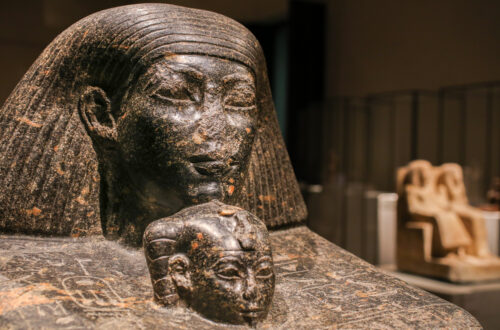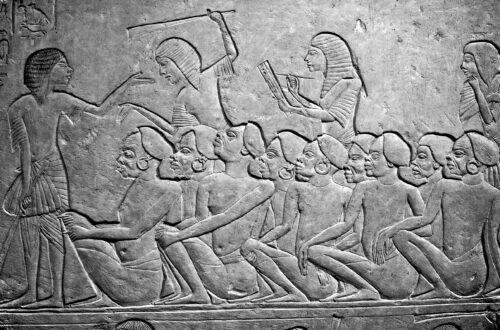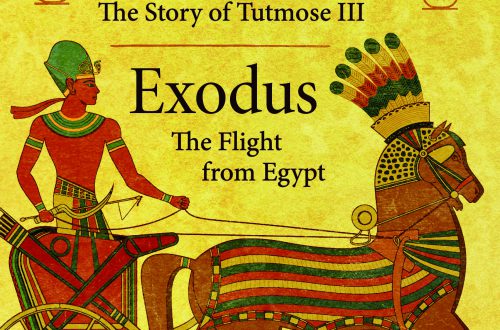The dating of the Exodus, how did two different dates arise?
In 1822, Jean-Francois Champollion, the French Egyptologist and linguist achieved his first true breakthrough in the translation of Egyptian hieroglyphics, with the decipherment of the two Pharaonic names, ‘Ramesses’ and ‘Thutmose’. This must have caused great excitement throughout the world of biblical scholarship because the Bible had always retained the name ‘Ramesses’ in the opening chapter of the book of Exodus. ‘Ramesses’ was a store city, built for the storage of grain and it was built by the Hebrew slaves.
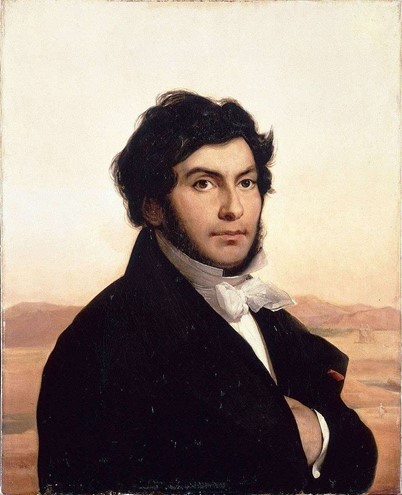
Jean-Francois Champollion, by Léon Cogniet
From there it was a logical step to equate the name of that store city, ‘Ramesses’, with the most famous of the Ramesside kings Ramesses ll, and the famous Capital City he built, Pi-Ramesses, equating the two cities as one, and connecting Ramesses ll with the date of the Exodus. But these were major mistakes, which set biblical scholars on a false trail, culminating in the erroneous theory we now have of an Exodus in the time of Ramesses ll’s son Merneptah, the theory of ‘the late date Exodus’. This is exactly what we find in the writings of Amelia Edwards the founder of the ‘Egyptian Exploration Fund’, in her book ‘A thousand miles up the Nile’. She visited Egypt in 1873-4 and wrote of it, including a chapter on Ramesses ll whom she describes as the persecutor of the Hebrews, with his son Merneptah as the Pharaoh of the Exodus.
But the huge Capital city of Pi-Ramesses became a source of confusion for another reason. The search was now on to find the site of Pi-Ramesses and when in the 1930s Pierre Montet found statues of Ramesses ll at Tanis it appeared that the site had been found. Those who understood that the store city of Ramesses was distinct from the capital city of Pi- Ramesses, and built earlier, still expected that the two cities were built on the same site. However, it was found that the statues and buildings of Pi-Ramesses, found by Pierre Montet stood on virgin land, with no older buildings on the site. It, therefore, had to be assumed that Ramesses the store city and Pi-Ramesses the Capital city were built at the same time, in the time of Ramesses ll.
Slowly, as the new science of Egyptology made discoveries and the world of the Pharaohs was uncovered, it became clear that the Biblical dates given for the Exodus did not match with the time of the Ramesside kings. But the evidence at Tanis still stood, and so a division occurred between archaeology and the Bible. Archaeologists who still believed in an Exodus started looking for an Exodus in the 1300s or 1200s BC, the time of Ramesses ll and his son Merneptah.
Then in the 1960s, Manfred Bietak’s painstaking work led to an extraordinary breakthrough. Bietak realised that the city of Pi-Ramesses had been positioned on the easternmost branch of the Nile, the Pelusiac branch. This branch had become blocked over time by silt, but he was able to follow its course and discovered the bases of huge statues, cut off at the ankles in present-day Quantir.
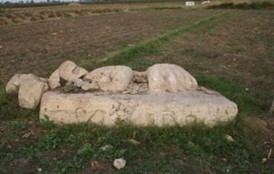
He then realised that the entire city, instead of being abandoned, had been transported 30 miles northeast to Tanis where statues without their bases were found. This gave an understanding that the original site of Pi-Ramesses was at Quantir, and this site was much older than Tanis. So it was clear that the store city built by the slaves could well have predated the time of Ramesses ll and the building of Pi-Ramesses, in line with the biblical dating of the Exodus. But by now much work had already been done to find evidence of an Exodus in the time of Ramesses ll and his son Merneptah and so the late date Exodus had become established.
In fact, the Bible has many texts dating the Exodus, but none of them points to the time of the Ramesside kings and their heirs who came too late on the scene to be involved. Instead, the bible clearly points to an Exodus in 1446 BC in the reign of Amenhotep ll. His father Thutmose lll (who died in 1450 in line with the High Chronology), was one of the longest-reigning Pharaohs and during his reign, Moses hides in Midian for 40 years. Then Exodus 2 v 23, says “After a long time the King of Egypt died.” Not many Pharaohs reigned for ‘a long time’ like Thutmose lll, so this gives another confirmation.
The quotes which follow are a summary of the dates we are given in the bible. It is a remarkable record.
1) I Kings 6 v 1 states that Solomon started building the Temple in the 4th year of his reign, 480 years after the Exodus. We know that Solomon’s 4th year was 966 BC, thus fixing the Exodus in 1446 BC.
2) In Judges 9 v 11 Jethro states that by his day, 300 years had passed since the Hebrews entered Canaan. Jethro was one of the last judges of the pre-monarchy. He lived around 1100 BC, before both Saul and David. (David’s date is around 1000 BC). Adding 300 years to the 1100 date gives us 1400 BC, the correct period of the Hebrews’ entry into Canaan.
3) Now let us look at the first promise God made to Abraham in Genesis 12 v 2&3, when he was 70 years old.
“I will make you into a great nation.”
We know that this is 430 years before the Exodus because Paul tells us so in Galatians 3 from verse 16. Paul gives us a time span of 430 years from the first promise to Abraham until the Exodus when Moses was given the Law.
Paul says that the Law was given (by Moses) 430 years after God made his first promise to Abraham. So the 430 years covers Abraham’s years from the time the first promise was given, all of Isaac’s life, and Jacob’s time in Canaan before he went to Egypt, plus the time the Hebrews were in Egypt. This makes it clear that the Hebrews were not in Egypt for the whole 430 years.
4) The next time God makes a promise to Abraham is 30 years later.
In Genesis 15 God says,
“Know for certain that your descendants will be strangers in a country not their own and they will be enslaved and illtreated 400 years.”
Isaac and Jacob lived in Canaan for 190 years from the birth of Isaac until Jacob went to Egypt. They were not enslaved but they were oppressed by the Canaanites. They were in a land that was ‘not their own’. Isaac dug many wells which were filled in by his neighbours. Later Jacob went with his family to Egypt to join Joseph and some years later they were enslaved.
This promise to Abraham in Genesis 15 is confusing. I have found a paper by Mosher Anbar of Tel Aviv University who suggests that Genesis 15 is a combination of two separate narratives.
But the text of Exodus 12 v 40 in the Samaritan Pentateuch version helps to clarify the meaning of Genesis 15 as it covers the same ground; it is as follows –
“Now the sojourning of the children of Israel AND OF THE FATHERS OF THEM WHO DWELT IN CANAAN AND EGYPT, was 430 years.”
So the 430 years includes the time of Abraham, Isaac and Jacob in Canaan before the family went to Egypt, as well as the years in Egypt.
Abraham Isaac and Jacob lived in Canaan for 220 years, from the time when Abraham arrived in Canaan and received the first promise, until Jacob went to Egypt. Jacob went with his family to Egypt to join Joseph. They were there for 210 years. First of all they were welcomed by the Hyksos kings then were forced into slavery when the native Egyptians regained power and established the New Kingdom 18th Dynasty. During that time this family grew to become a nation.
So the 430 years include a period of Abraham’s life and the time that Isaac and Jacob were in Canaan before the family went to Egypt, as well as the years in Egypt.
Adding up the dates
1) God’s first promise to Abraham Genesis 12:2&3 when he is about 70 years old: “I will make you a great nation”.
2) 30 years pass until the birth of Isaac.
3) Genesis 25:26 states that Isaac is 60 years old when Jacob was born.
4) Genesis 47:8 states that Jacob is 130 years old when he goes to Egypt.
TOTAL 220 years
5) The remainder of the 430 years is another 210 years when the Hebrews were in Egypt, first under the Hyksos kings who had invaded Egypt and were not Egyptian. They welcomed Joseph and his family. Then the ‘New Kingdom’ native Egyptian Pharaohs regained control of the country and forced the Hebrews into slavery.
6) Paul in Galatians 3 confirms that from the first promise God made to Abraham until the Exodus when the Law was given was 430 years.
All the above point to an Exodus around 1446 and must be explained away if the Exodus is to be dated after 1300 BC.
